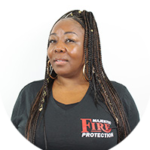NFPA 16 Standard for the Installation of Foam-Water Sprinkler and Foam-Water Spray Systems

Fire incidents are among the major challenges the world encounters today. Most fire protection and fire engineering specialist follow the authorities and NFPA formulate standards, and the observance of these standards is directed compulsory in and all the constructions.
One such standard is NFPA:16. What is this standard about, and what does it imply? We will cover all the information in the following section.
What is NFPA: 16?
NFPA 16: Standard for the Installation of Foam-Water Sprinkler and Foam-Water Spray Systems provides maximum protection and safety against the fire. It provides guidance for installing or repairing the foam water sprinkler and foam water spray systems based on engineering principles and field experience.
The standard outlines minimum requirements for the design, installation, acceptance tests, inspection, and maintenance of foam water sprinkler and foam water spray systems. NFPA 16 specifies that these systems are adequately designed to effectively achieve the desired density of both systems to prevent life and property losses in the US.
Foam-Water Sprinkler and Foam-Water Spray Systems
Foam water sprinklers and foam water spray sprinklers are complicated systems required to extinguish the most horrible fires caused by flammable liquids like alcohol. In case of a fire emergency, the system is activated, and water pressurizes the foam bladder tank to release foam, which combines with water and extinguishes fire.
NFPA: 16. Directions:
NFPA: 16 covers all the directions involving the design of the water supply and discharge density. Under the illustrated standard, the water supplies shall be designed to supply water at the designed discharge density and pressure for a minimum of 60 mins.
It further points out that the minimum discharge density, in any case, should not be less than 0.16 GPM/ft2 (6.5 mm/m2). However, different values can be used depending on the type of fire and the foam manufacturer's recommendations.
Foam-Water Sprinkler and Foam-Water Spray Systems
Though there are many types of Foam-Water-Spray Systems, we have covered the Wet Pipe System in detail. So, you have a comprehensive understanding of this system.
Directions for the wet pipe system:
According to NFPA 16, wet pipe low flow systems need to be automatic and mechanical without devices, valves, and pumps. All components of the system shall be approved to ensure maximal working.
The system requires a reduced discharge pressure at the riser through an approved pilot operated pressure regulating valve. The valve should be capable of enduring water pressure of 250PSI.
NFPA 16 states that a concentrate control valve shall be present between the bladder tank and concentrate controller. The valve should be designed in such a way that it automatically opens in response to water flow. Moreover, the valve shall be of corrosive resistance material with Halar coating, and valves shall be of Viking Model E-2, E-4, or F-2.
The system requires Foam concentrate aqueous or alcohol-resistant aqueous film-forming foam. In the case of water-soluble liquids, the alcohol-resistant type is needed.
These Foam concentrates shall be approved and designed to ensure their efficient working with the Viking Corporation Low Foam System.
WET PIPE AFFF SPRINKLER SYSTEM
According to NFPA 16, for the proper installation and working of wet pipe AFFF sprinkler system, a system fire department connection is crucial. The brass body connection shall be of brass and FM approved for fire protection use.
NFPA 16 also indicates using an alarm valve to activate the alarm during water flow in the system. The valve should be FM approved and installed in a vertical or horizontal position to operate at a pressure of 250 PSI (17 BAR).
A low expansion foam bladder tank is required according to NFPA 16 to store the foam concentrate. The tank should be fitted close to the riser to make it accessible for inspection, and it should meet ASME pressure vessel requirements.
Foam concentrate shall be of brass, and it should have an appropriate nominal orifice plate size. Apart from the basic layout and installation, NFPA 16 covers all requirements for maintenance.
Additionally, foam concentrates needs to be tested by installing contractor which provides maintenance and safety data sheet to the owner.
Temperature and spacing:
Apart from designs, the installation of these sprinkler systems at proper spacing is also necessary. According to NFPA 16, spacing should not be more than 100 square feet per sprinkler.
When these sprinklers are required to fit on the roof, their temperature should not exceed the range of 121 -149 degrees Celsius. While for low-level installation, the temperature should be maintained between 57 to 77 degrees Celsius.
Conclusion
Foam-Water Sprinkler and Foam-Water Spray Systems are essential fire safety equipment installed in buildings to ensure protection against fire caused by flammable liquids and airport hangers. To design a proper system depending upon the type of facility and its installation requires compliance with requirements provided by NFPA 16.



